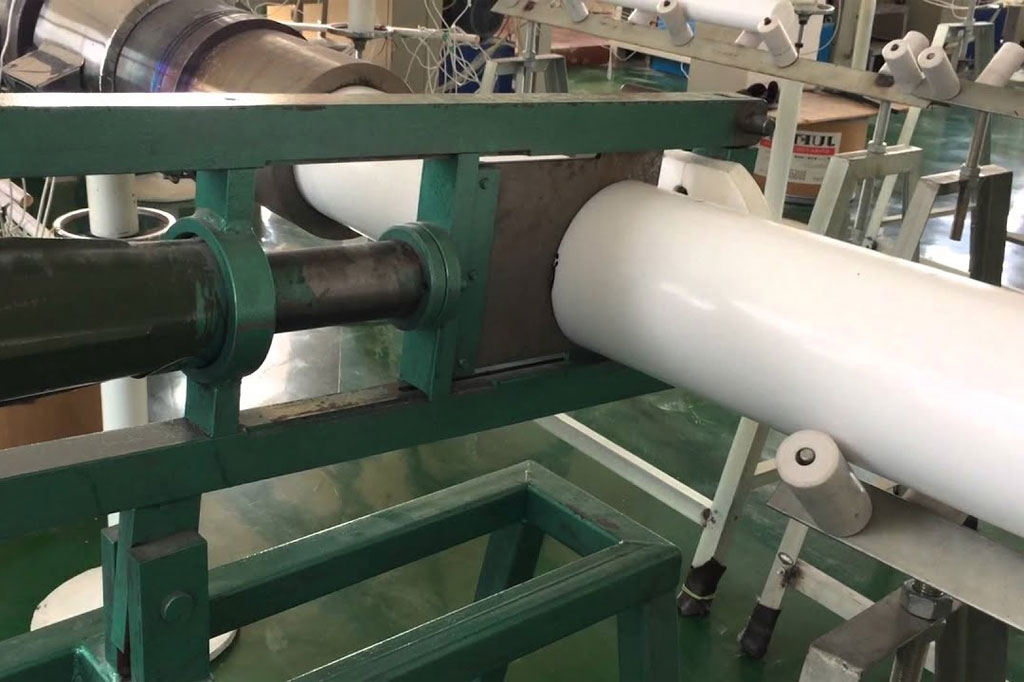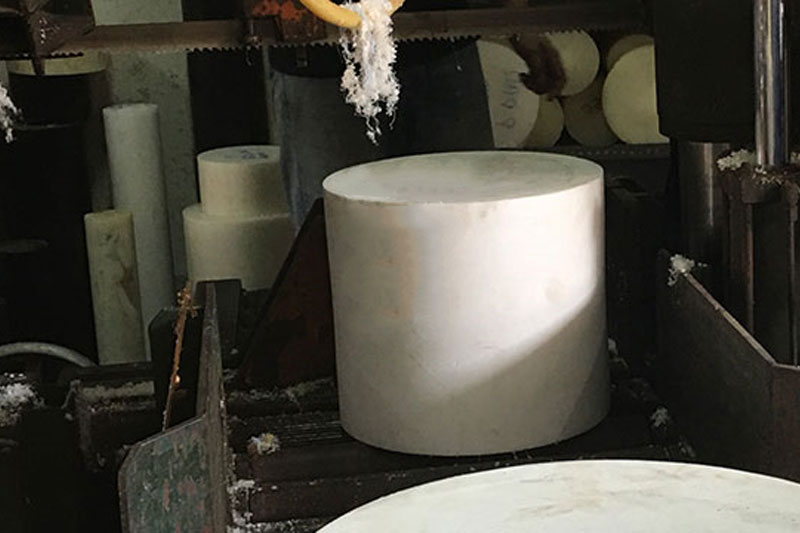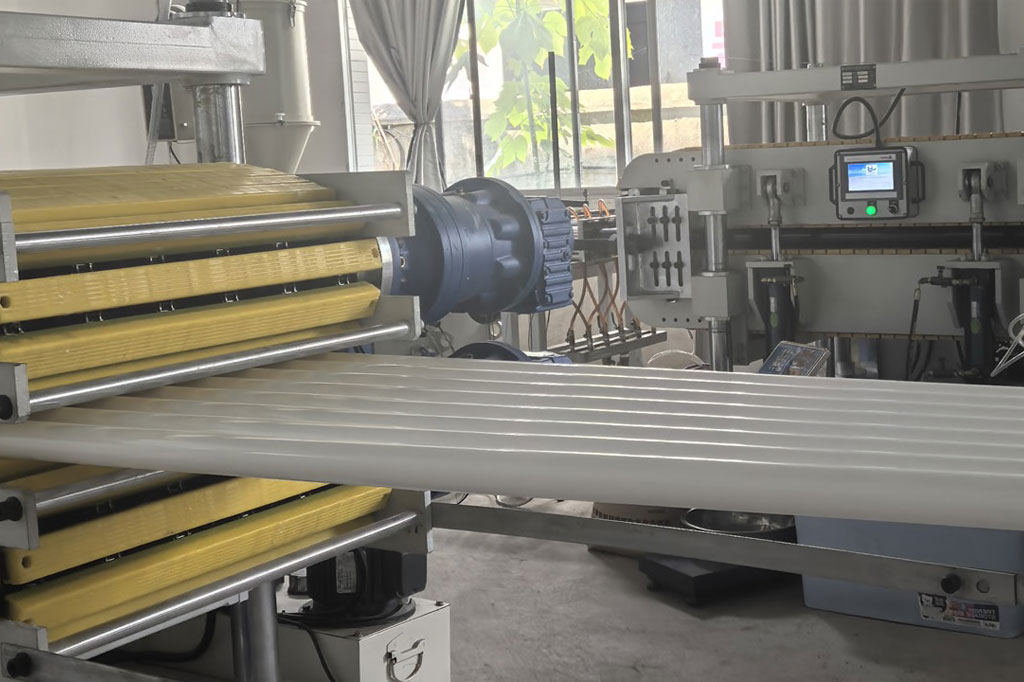PTFE rods are commonly used in industries like chemical processing, electrical insulation, food and pharmaceuticals, and mechanical engineering. PTFE rods are commonly manufactured through two main processes: extrusion and molding. Each method has distinct advantages, disadvantages, and suitable applications.
Understanding the differences between extruded and molded PTFE rods is crucial when selecting the right material for your specific engineering or manufacturing needs.
1. What is Extruded PTFE Rod?

Extruded PTFE rod is produced by forcing PTFE resin through a die under high pressure. This continuous process creates rods of various lengths and diameters, typically in the range of 3 mm to 150 mm (1/8 inch to 6 inches). The extrusion process is generally done with paste-extrusion, using a lubricated fine PTFE powder.
Advantages of Extruded PTFE Rod:
- Consistency: Suitable for long lengths and uniform diameter.
- Flexibility: More flexible and slightly softer than molded rods.
- Economical: Typically less expensive due to the continuous production method.
- Surface Finish: Generally has a smoother surface finish.
Disadvantages of Extruded PTFE Rod:
- Lower mechanical strength compared to molded PTFE.
- More prone to deformation under heavy load or high stress.
- Limited maximum diameter, as larger sizes are difficult to extrude.
2. What is Molded PTFE Rod?

Molded PTFE rod is made using a compression molding process where PTFE powder is placed in a mold cavity and compressed under high pressure, then sintered (heated) at high temperatures. This batch process is used to create rods with larger diameters, typically up to 300 mm (12 inches) or more.
Advantages of Molded PTFE Rod:
- High strength and density: Offers greater compressive strength and structural integrity.
- Better dimensional stability: Suitable for applications involving higher loads or stress.
- Custom sizes available: Can be tailored for thicker, heavier-duty applications.
- Low deformation: More resistant to creep and cold flow.
Advantages of Molded PTFE Rod:
- Higher cost due to slower batch production.
- More brittle in thinner diameters.
- Surface finish may require additional machining or polishing.
3. Key Differences Between Extruded and Molded PTFE Rods
| Property | Extruded PTFE Rod | Molded PTFE Rod |
|---|---|---|
| Production Process | Continuous extrusion | Compression molding and sintering |
| Cost | More economical | Generally more expensive |
| Strength | Lower mechanical strength | Higher mechanical strength |
| Length | Available in longer lengths | Shorter standard lengths |
| Diameter Range | Typically up to 150 mm | Typically 100 mm to 300 mm+ |
| Surface Finish | Smoother | May require post-machining |
| Flexibility | More flexible | More rigid |
| Porosity | Slightly more porous | Denser and less porous |
| Applications | Electrical insulation, light-duty seals, bearings | Structural components, high-load seals, valve seats |
4. Applications
Extruded PTFE Rod Applications:
- Bushings and bearings in low-load applications
- Slide plates and spacers
- Electrical insulators
- Gaskets and seals for low pressure
- Piping components for non-critical fluid handling
Extruded rods are ideal for applications that prioritize chemical resistance, low cost, and long continuous lengths over mechanical strength.
Molded PTFE Rod Applications:
- Heavy-duty gaskets and seals
- Valve seats and linings in high-pressure environments
- Load-bearing components
- High-performance wear pads and guides
- High-voltage electrical insulators
Molded PTFE rods are preferred when dimensional stability, mechanical strength, and load resistance are crucial.
5. How to Choose: Extruded or Molded PTFE Rods?
The choice between extruded and molded PTFE rod depends on several factors:
- Mechanical Requirements: If your application requires structural rigidity or resistance to high compressive loads, go with molded PTFE.
- Dimensional Needs: For long, continuous lengths or smaller diameters, extruded PTFE is better suited.
- Cost Constraints: Extruded PTFE is generally more economical and readily available.
- Machining Needs: Molded PTFE provides more material density, which may be advantageous for precision machining and dimensional tolerances.
- Surface Quality: If a smoother surface is desired directly from the rod, extruded PTFE typically delivers better initial finishes.
6. Machinability Comparison
Both extruded and molded PTFE rods are easy to machine using standard tools. However, their differing properties can influence the ease and results of machining.
- Extruded PTFE: Machines more easily due to its lower density, but may deform slightly during aggressive operations.
- Molded PTFE: Offers more precise cuts and dimensional stability, but can be more brittle and abrasive to tools.
When tight tolerances or minimal warping are required, molded PTFE is often the better choice despite being harder to machine.
7. Cost Consideration
In most cases, extruded PTFE rods are cheaper because they’re produced continuously, which reduces labor and production time. However, the cost advantage diminishes when large diameters or high mechanical strength is needed—scenarios where molded PTFE rods provide better long-term value despite higher upfront costs.

